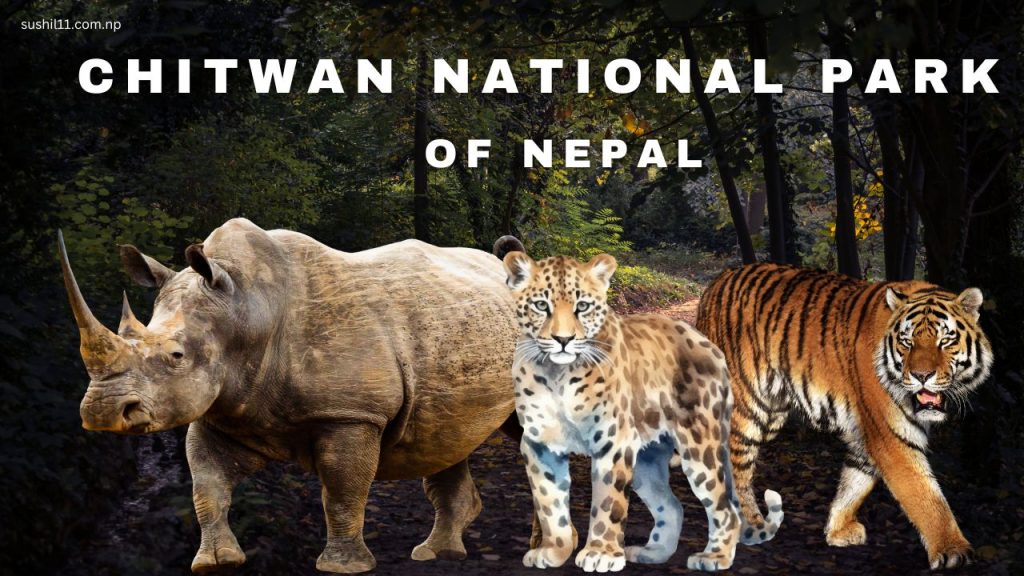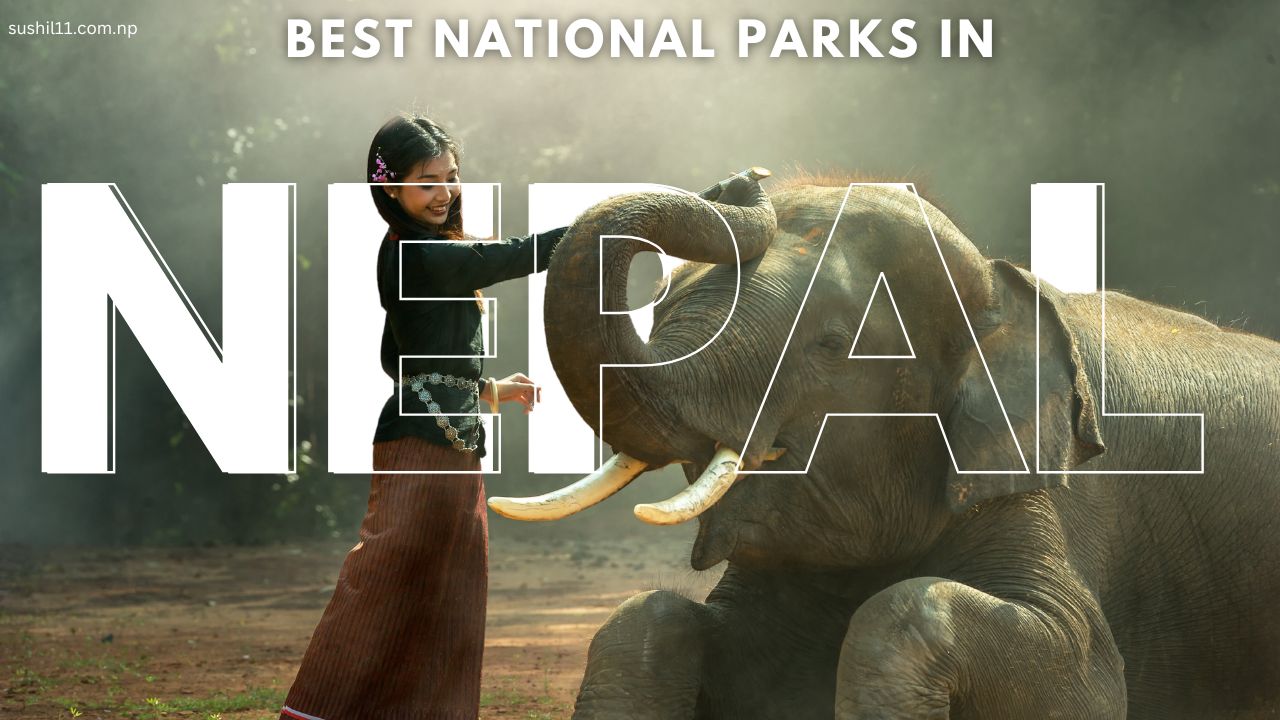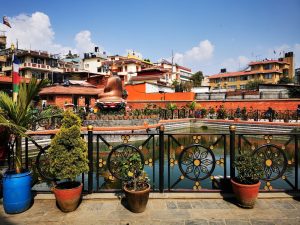
As a UNESCO World Heritage Site, Chitwan National Park is often referred to as one of the treasures of Nepal. These parks are located in subtropical lowlands and are known for the dense vegetative cover, the ancient values, and the calamitous animal encounters offered. Being the first national park to be established in Nepal in the year 1973, Chitwan extends over an area of 952.63 square kilometers of land, and its carbonate zone is slightly over 729.37 square kilometers in size. The other district that bears the park includes Nawalparasi as well as Parca and Makawanpur within Chitwan. School geography includes such charming locations as the Narayani River, the Rapti, and the Reu, which runs deep in the gorgeous hills of the Chitwan National Park.
Background and Significance of Chitwan National Park
A famous hunting ground for Nepal’s kings and Rana rulers of the past, the natural wealth of Chitwan made it a deer park in 1959 and a Rhino Sanctuary later in 1963. It became the first national park in Nepal to be declared in 1973 and recognized as a UNESCO World Heritage Site in 1984. Since, the applicant has played a more vital role in the habitat destruction of such hunted animals as one-horn rhinoceros and hypocritical tiger. The Eastern Complex has once again expanded, this time with the establishment of Chandiya Veer, which has reinforced the conservation efforts of biological diversity in Nepal. The park has shown ways in managing local population through its buffer zone management 30-50% of the income generated by the park is earmarked for development activities in requesting communities.
Climate and Best Time to Visit Chitwan National Park
Chitwan has a tropical monsoon climate with a variety of weather conditions, with each season contributing to different experiences. The months of October to February are by far the most favorable months for traveling to the region, with generally warm temperatures of around 25 degrees Celsius. Wildlife viewing is also at its peak during this duration. From March to June, temperatures may reach up to 43 degrees Celsius and thus, very hot and sultry conditions prevail in the park. The monsoon rains begin late in June and end in September, which also renders several roads impassable to traffic due to flooding; but the vegetation growing after the rains is an asset. For the best views of migratory birds, nine-month period between September and November and February and April is the best.
Chitwan National Park’s Habitat and Biodiversity
Chitwan has a variety of vegetation and ecosystems from tropical to subtropical forests. Close to 70% of the park is covered with Sal (Shorea robusta) forest, which signifies the Terai. The rest is riverine forests and grasslands with elephant grass grown up to more than 50 species and reaching 8 meters. Rich and varied wildlife inhabits the diverse habitats within the ranges of the park’s complex structure.
Wildlife at Chitwan National Park
Chitwan National Park is an ideal place for all animal lovers, as it houses 68 species of mammals, 56 species of reptiles and amphibians, and 126 species of fish. One of the most important conservatories in this park is the endangered one horned rhinoceros and the reclusive Royal Bengal tiger. In addition, leopards, wild elephants, and sloth bears are some of the other attractive animals resident there.
If you are a bird lover, then the park will not disappoint you as it has over 550 bird species. Out of these more than 550 bird species, 22 are considered threatened species, including the critically endangered Bengal Florican , Slender-billed Vulture, White-rumped Vulture and Red-headed Vulture . Some visitors may even spot the Gangetic dolphin, mugger crocodile and gharial crocodile in the waters of this park.
Rivers and Lakes: Lifeblood of Chitwan
In the case of this park, the main rivers are Narayani, Rapti and Reu, which are also very important in the preservation of species diversity in the park. Together with the comprehensive ‘flood’ surrounding the river system and the park, the river, crocodiles and dolphins are likely to be seen. The Intermediate zone consists of Beeshazari Lakes, which is another Ramsar Site located by the Park due to its importance for migratory birds and water animals.
Efforts to Preserve Nature and Its Constraints
Chitwan National Park has a great history of wildlife conservation and its status as a dedicated area has permitted the endangered one – horned rhinoceros to flourish. However, the park still faces challenges restoring the park, especially due to habitat destruction and poaching. The local community has become one of the core actors for conservation and the buffer surrounding the park has been established for the benefit of both wildlife and people. The park also provides sustainable development projects, which in turn bring revenue to the park, helping in the creation of the people and wildlife corridors.
Conclusion: Exploring an Enchanted Wilderness
Chitwan National Park is one of the richest tropical and subtropical ecosystems that are still intact anywhere in the world . Be it the languorous Bengal tiger or the flaming hues of avian life, Chitwan will take you quite deep into the wildness of Nepal. Chitwan is a natural wonder that can never be fully explored, be it its dense forests, wild commendable jungle safari, or the local Tharu community engagement, one will always be in for a thrill.
Fabulous Safari Experience in Chitwan National Park
Chitwan National Park lies within the UNESCO World Heritage Sites. And, it also presents some of the most exciting safari activities to nature and wildlife lovers. Visitors can pick from various safari options to un-knotted the park’s amazing scenery and rich wildlife.
Jeep Safari: A Perfect Destination in Chitwan National Park
A jeep safari in Chitwan National Park is often regarded as the best way to explore the area. Tourists sit inside a comfortable 4×4 vehicle and move along thick forests and spanned grasslands. Every tour consists of professional personnel who undertake the task of searching for wildlife en -route.
This type of safari allows one to reach the farther parts of the park in no time. It is a perfect option for individuals ready to observe a lot of animals from the very first expedition. Getting to see fascinating Bengal tigers, leopards and sloth bears would just be part of your fantastic journey.
Duration: 3 to 4 hours
Best time: Early morning or late afternoon
Highlight: Facing the first one-horned rhinoceros face to face.
Elephant Safari: A Remarkable Adventure in Chitwan National Park
Elephants could be used in a novel way in Chitwan National Park, which is quite thrilling. Exhilarated visitors are seated on broadbacked elephants, these gentle animals, and thus able to have a higher and more powerful view of the vegetation. This makes it easier and more fun to see animals as well.
The elephants virtually glide through the jungle, making the experience less exhausting and more peaceful. Up close, you can view rhinoceros, deer, and wild boar during the ride. One can have some unforgettable experiences with the mighty animals.
Duration: 1 to 2 hours
Best Time: Early morning
Highlight: Experience wildlife from above, as you will be raised high above in some structure
Canoe Safari: A Relaxing Experience In Chitwan National Park
This activity is a paddle safari, which allows you to enjoy the ride in a more relaxed manner while discovering the water bodies of Chitwan National Park. Holidaymakers calmly paddle on wooden canoes along the Rapti River or river Narayani. This activity facilitates another dimension of birding within the park.
While you float on the river, you are likely to see some alligators lying on the riverbank. People who enjoy observing birds will be happy to look at a wide range of water fowl. Sometimes, the rare Gangetic dolphin can even be seen.
Duration: 1 hour to 2 hours
Best Time: On a summer or winter late afternoon or early summer morning.
Highlight: Identifying crocodiles and birds in their natural setting.
Walking Safari: Exploration into the Nature of Chitwan National Park
For a more personal touch, there is the walking safari where one can explore the Chitwan National Park on foot. With the help of trained individuals, you travel over the hills with the jungle’s vegetation and the grassland. This experience enables one to come face-to-face with the vegetation and animals one cannot see while inside the vehicle.
Walking safaris enable one to spot smaller animals and birds that one would have otherwise missed out on vehicle tours. The sacred and useful plants and animal tracks will be learnt in detail. This adventure builds a strong bond with mother nature.
Duration: 2 to 3 hours
Best Time: Early morning or on a late afternoon.
Highlight: A chance to view wildlife at its ground level.
Bird Watching Safari: An Ultimate Experience for What Bird Lovers are looking for in Chitwan National Park
Chitwan National Park serves as a paradise for bird lovers owing to more than 550 species of birds being recorded within its vicinity. They go out on expertly guided bird-watching safaris and explore some of the best spots for rain and migratory birds. The months between September and April make the park most lively.
On this safari, one can capture breathtaking birds, including kingfishers and storks, in their natural habitat. The experienced team will give an impression of how each species acts and where it lives. Fruity flora around may attract birdwatchers to some rare Bengal Florican.
Duration: About 2 to 3 hours
Best Time: Morning or late in the afternoon
Highlight: The spectacular views of some rare, beautiful birds in their natural habitats
Combination Safari: Bonuses of Your Safari in Chitwan National Park
If you want to maximize your experience, you may try the combination safari in Chitwan National Park. This adventure incorporates jeep, elephant, canoe and walking safaris. People have a long and busy day that is physically and visually rewarding.
This option guarantees that you will see all the fascinating animals inhabiting the park. Every aspect of exploring the wildlife park covers a different side of the park and its beauty. Keep the enjoyed activities in your mind while being part of nature for the whole day.
Duration: Full day
Best Time: All day but interspersed with rests
You will never forget any of your adventure with regard to the safaris at Chitwan National Park. However, each option will give different fun for all nature lovers. Adventure awaits you whether you choose a jeep, elephant, canoe, walking or combination safari!Highlight: Experiencing Chitwan’s biodiversity through multiple safari styles
Best Time for Safaris at Chitwan National Park
While Chitwan is accessible year-round, the best time for safaris is from October to February, when the weather is cooler and wildlife is more active. During these months, you can enjoy pleasant temperatures and a higher chance of spotting animals. For birdwatchers, the months between September and April offer fantastic opportunities to see migratory birds in the park.
Conclusion: A Safari Experience Like No Other
Whether you’re riding through the jungle in a jeep, floating down the river in a canoe, or trekking on foot, Chitwan National Park offers a wide range of safari experiences that cater to every type of traveler. With each safari, you’ll get a closer look at the park’s incredible wildlife and leave with unforgettable memories of your adventure in Nepal’s natural paradise.



